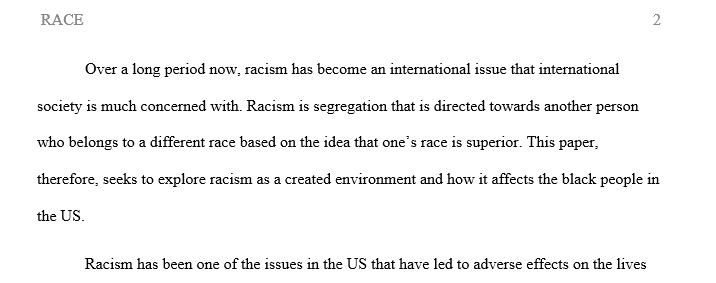Created Environment
This Essay focuses on Created Environment. Definitions of “Environment” are necessary to better understand the concept we are dealing with in this essay.
Dictionary.com defines the noun “Environment” as:
- the aggregate of surrounding things, conditions, or influences; surroundings; milieu.
- Ecology. the air, water, minerals, organisms, and all other external factors surrounding and affecting a given organism at any time.
- the social and cultural forces that shape the life of a person or a population.
The World English Dictionary defines “Environment” as the “external conditions or surroundings, esp. those in which people live or work.”
The Medical Dictionary defines “Environment” as “the complex of physical, chemical, and biotic factors (as climate, soil, and living things) that act upon an organism or an ecological community and ultimately determine its form and survival.”
Merriam-Webster’s Medical Dictionary defines “Environment” as “The totality of circumstances surrounding an organism or group of organisms, especially the combination of external physical conditions that affect and influence the growth, development, and survival of organisms.”
Wikipedia‘s entry for “Built Environment” expands on these definitions, as it:
refers to the human-made surroundings that provide the setting for human activity, ranging in scale from personal shelter and buildings to neighborhoods and cities that can often include their supporting infrastructure, such as water supply or energy networks. The built environment is a material, spatial and cultural product of human labor that combines physical elements and energy in forms necessary for living, working and playing.
When choosing an essay topic, I want you to expand this concept to potentially focus on any system that humans have created, shaped, reshaped, or helped evolve. These systems can be physical, emotional, spiritual, or intellectual, as parts of our societal and cultural existence, so long as the system involves humans.
According to Wikipedia, synonymous terms for different “environments” humans are a part of are Architecture, City planning, Cultural landscape, Environmental psychology, Environmental Sustainability, Knowledge environment, Landscape, Natural environment, Public Policy, Social environment, Sustainable development, Urbanism, and Urban planning. There are, of course, many more environments beyond this list.
* * *
Which specific angle/topic you focus on in the large field of Created Environment is up to you. To aid in choosing, consider your interests. First, find a large topic, then search for smaller sub-topics within it. Here are just a few large topics: politics, gender, sexuality, education, the economy, geography, entertainment, sustainability, ethnicity, race, religion, and media. For example, imagine you choose the large topic of “terrorism.” This is much too complicated and far-reaching to cover in three pages, so you must find a workable sub-topic. One of many smaller angles you could take is “America’s reaction to terror.” This is still much too large, so imagine you further shrink the topic to “the shift in freedom Americans are experiencing due to Homeland Security policies and procedures.” Trying to narrow your topic as much as possible, focus on the Transportation Security Administration’s airport and in-flight security standards and their effect on air travelers. That is still a broad topic, but it can much more easily be written about comprehensively.
In this Essay, as you create an argument, you must:
- choose a specific angle within created environment as your topic
- understand the writing process
- create a clear, focused thesis statement
- offer general and specific examples within your topic
- choose an appropriate topic within Created Environment as your focus, and include:
- what–clearly lay out and describe the created environment you will focus on / clearly lay out and describe people’s effect on the environment and the environment’s effect on people
- who–clearly name, illustrate, and discuss those who are a part of the environment
- where–clearly name, illustrate, and discuss the “location” of the environment
- when–clearly name, illustrate, and discuss the time period of the environment
- how–clearly name, illustrate, and discuss the ways in which the environment has been created, shaped, reshaped, or has evolved
- why–clearly name, illustrate, and discuss the motivation behind people’s effect on the environment and the motivation behind the environment’s effect on people
- write from the third person point of view (he/she/it/they), NOT the first person (I) or the second-person (you)
- utilize the writing styles of description, exposition, argumentation, and narration (and Example, Comparison and Contrast, Cause & Effect, and Process Analysis, as necessary)
- understand the research process
- locate and incorporate 3-4 outside sources of information (not any of the links I provided)
- show why this topic is important to the larger culture/society (or her subgroups)
- use the Essay 1 Workshop Questions to focus and direct your writing
- use the Essay 1 Assessment Rubric to focus and direct your writing
NOTE: This essay is not a historical summary. You are not simply presenting information on an environment that we could find in any number of sources. This is not a simple “book report.”
Instead, you are showing us the highly descriptive story of the environment you have chosen to write about, focusing on how the what, who, where, when, how, and why of the environment make it exist the way it does, in your opinion. Remember, however, that even though you are presenting your own opinion, you must write in the third person. You are finding information that backs up your ideas, and through using the words of others to help forward your own ideas, you can more easily avoid using the first or second person.
This essay is 3 pages in length, minimum, following the paper formatting guidelines. There is no official maximum page length, but time, conciseness, and brevity dictate no more than 4 pages.
910 Words
APA
